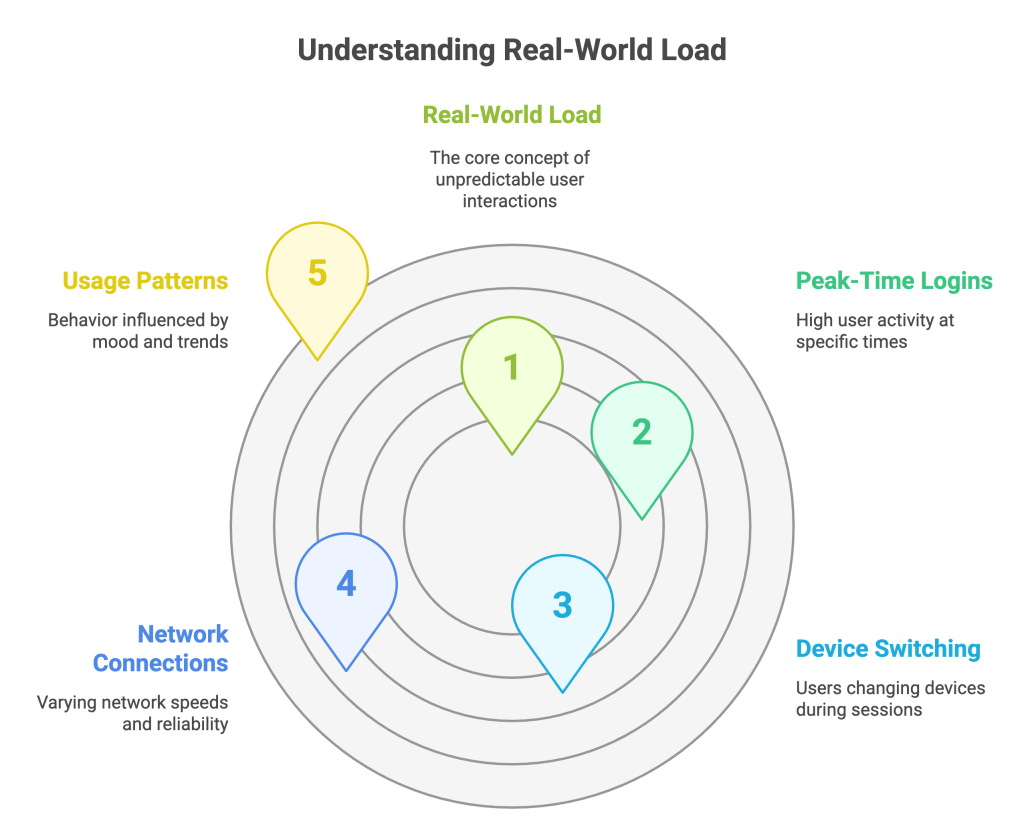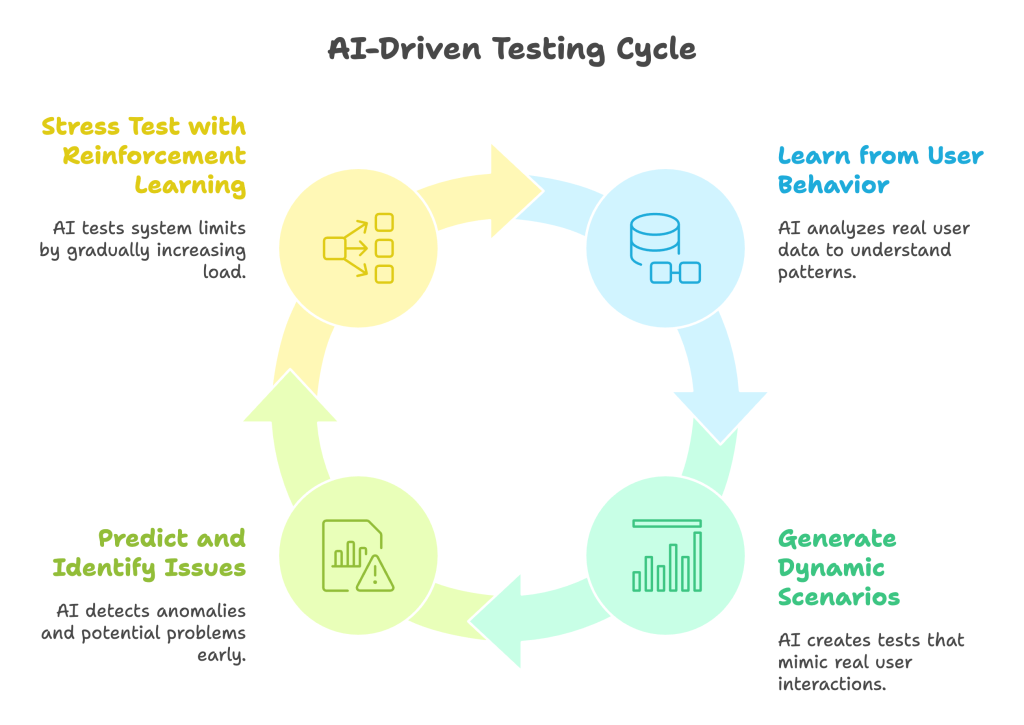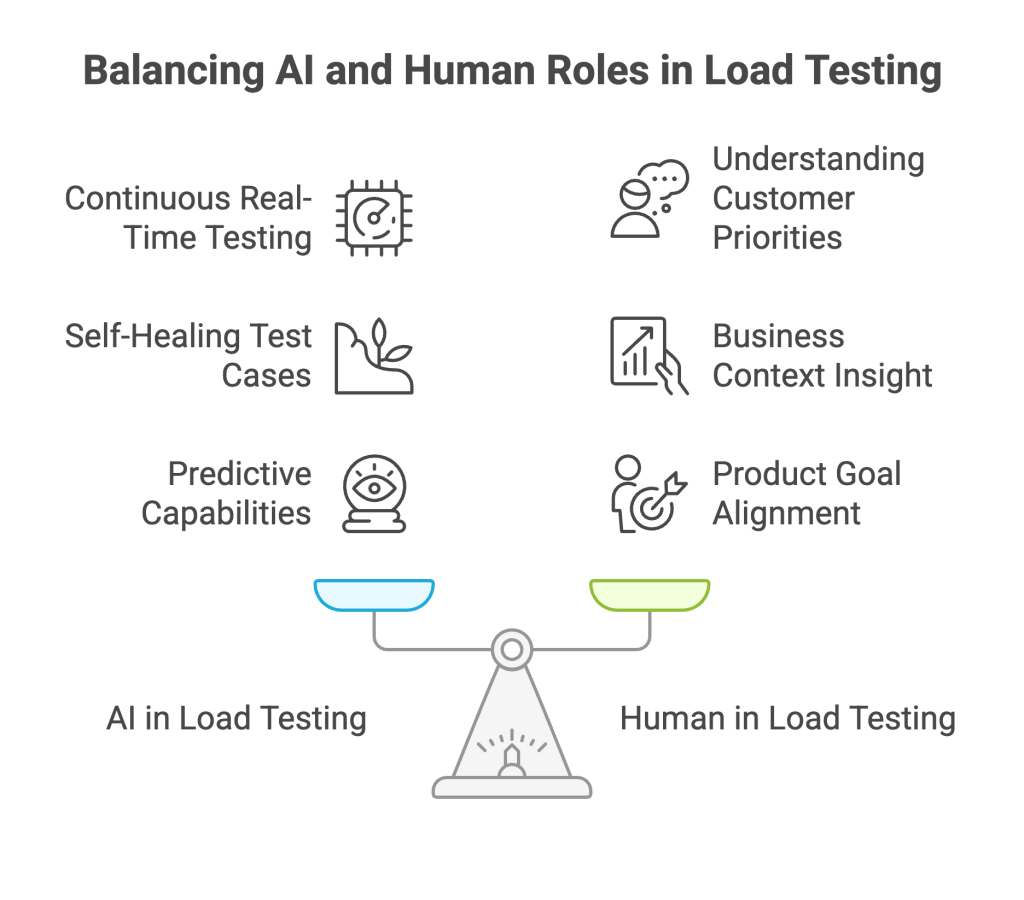Can AI truly simulate real-world load for non-functional testing?
As systems grow more complex and user demands rise, ensuring performance under real-world conditions is more critical than ever. Traditional load testing often falls short in simulating realistic usage patterns. AI offers a promising alternative—bringing adaptive, intelligent load generation to the forefront. But can it truly replicate the unpredictability of real-world user behavior?
Your app runs perfectly in the lab. But real users don’t follow the script. They show up in waves, switch networks mid-checkout, and use every device imaginable. That’s when things get messy. AI can help not just by testing what should happen, but by revealing what actually does in the wild.
What Exactly Is “Real-World Load”?
Before diving into how AI transforms testing, it’s important to understand the actual conditions your system faces in production.It’s not just about simulating high user volumes. It reflects the unpredictable, messy ways people interact with systems. Rather than one-size-fits-all test scripts, actual user behavior includes:
- Peak-time logins (e.g., thousands of users signing in at 9 AM)
- Switching between devices (like mobile to desktop mid-session)
- Slow network connections (e.g., 3G in rural or congested urban areas)
- Different time zones triggering simultaneous usage spikes
- Third-party service dependencies (APIs, plugins, etc., that may fail or lag)
- Usage patterns based on mood, trends, or seasonal behavior
This load varies continuously by geography, device, time, and context. A user on a fast, fiber-optic connection won’t interact with your platform the same way as someone using a basic smartphone on a slow network.
Capturing and simulating that range of real-world behavior is one of the biggest challenges in load testing. This is where AI makes a real difference, helping teams go beyond generic scenarios to model how users actually behave across different conditions.

What Exactly Is “Real-World Load”?
How AI Enhances Load Testing
AI doesn’t just make existing testing faster—it fundamentally changes how we think about testing by learning, adapting, and predicting.
- AI’s Continuous Learning and Adaptation: Unlike rigid test scripts, AI-powered load testing learns from real user behavior and adapts in real time as conditions shift.
By analyzing live usage data, AI can detect patterns such as :-
- When and where users drop off
- Which features dominate engagement
- Variations in usage by time, geography, and device
-
With this insight, AI continuously updates test scenarios to reflect unpredictable, evolving user patterns—without needing manual input. It doesn’t just simulate traffic; it adapts as your system changes, proactively spotting issues like latency spikes or bottlenecks before they affect users.
Example: If a new feature rollout causes more users to switch between mobile and desktop during a session, AI detects this shift and adapts the test scenarios accordingly to replicate that behavior, helping you catch potential issues before they affect your customers.
- Predicting and Identifying Problems: AI is excellent at spotting subtle patterns and anomalies, such as:
-
- Performance degradation or latency spikes
- Early signs of bottlenecks or crashes
- Deviations from historical performance benchmarks
-
Example: AI might identify that an increase in API calls during login is slowing response times—before users complain.
- Stress Testing with Reinforcement Learning: Through reinforcement learning, AI can:
-
- Gradually escalate load to find breaking points
- Monitor system responses in real time
- Adjust stress levels dynamically to avoid irreversible damage
-
Example: AI might slowly increase user concurrency until CPU usage hits 95%, then scale back to maintain stability.

How AI Enhances Load Testing
Challenges of AI in Load Testing
AI-powered testing holds enormous potential, but it isn’t without challenges:
- Quality and Quantity of Data:
- AI needs clean, diverse data to learn effectively
- Example: If your app only logs 10% of user activity, AI may overlook key interactions
- Lack of Transparency:
- AI can act like a black box—generating results without clear explanations
- Example: You may not know why it skipped testing a checkout flow unless logs are deeply reviewed
- AI can act like a black box—generating results without clear explanations
- Complexity and Cost:
- Implementation requires advanced tools, infrastructure, and AI-savvy testers
- Example: Training AI on millions of interactions might require cloud compute and storage investment
- Human Oversight Still Matters:
- AI lacks context and intent. Humans are essential for interpreting insights and linking them to business goals
- Example: AI may flag a slowdown, but only a human can confirm if it’s mission-critical
Traditional Load Testing vs. AI-Driven Load Testing
Moving from traditional to AI-driven load testing isn’t just about following a trend — it’s a direct response to the growing complexity of systems, larger user bases, and higher expectations. Here’s a side-by-side look at how these two approaches stack up across some of the most important areas:

Traditional vs. AI-Driven Load Testing
AI gives testing teams the ability to create smarter, more realistic, and scalable test scenarios — all while cutting down on maintenance and improving the accuracy of results.
The Road Ahead: Humans + AI
The future isn’t AI or traditional testing — it’s a smart combo of both:
- Continuous, real-time testing using live data from production environments
- Self-healing test cases that evolve with your application
- Predictive capabilities that warn of potential issues before users are affected
As this comparison shows, AI-driven testing brings greater adaptability, efficiency, and insight—helping teams move beyond static scripts to smarter, real-world performance validation.

The Future of Load Testing Is Human + AI
Conclusion: Level Up Your Load Testing Strategy
AI isn’t here to replace your existing tools—it’s here to enhance them. By adding intelligence and adaptability to your load testing strategy, AI helps you build systems that don’t just survive real-world pressure, but perform with confidence.
Now is the time to:
- Re-evaluate where traditional load testing falls short
- Pilot AI-driven testing in a high-impact, real-world use case
- Collaborate across QA, Dev, and Ops to scale successful approaches
In today’s unpredictable environments, passing scripted tests isn’t enough. True validation comes from testing that reflects how users really behave. And the most resilient systems are built with a partnership between human expertise and AI-driven precision.

